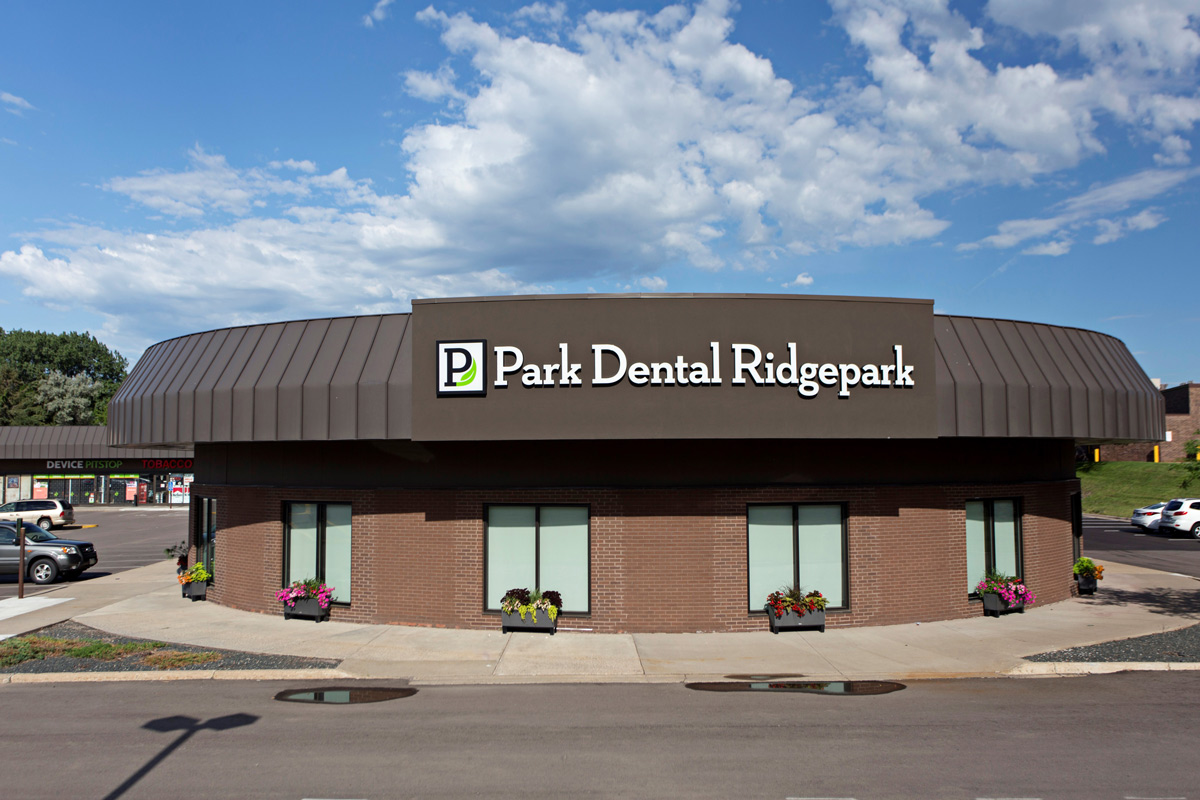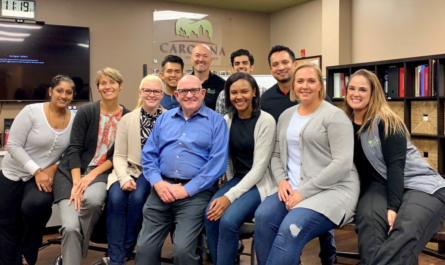Collaboration between team members drives quality patient care and continuous growth within the practice.
When Park Dental welcomed its first patients nearly 50 years ago, the group practice concept was newly evolving. Through team collaboration, however, the Minnesota- and Wisconsin-based dental practice has established itself as a high-quality provider of a wide range of patient services. Today, Park Dental boasts 51 offices and is home to over 950 doctors and team members.
“There’s no question that Park Dental has benefitted from the collaboration between our doctors and team members, ultimately driving consistent, quality patient care and service,” says Christopher E. Steele, DDS, president. “Our teams and doctors truly enjoy working together within a group setting, which also provides a network of general dentists and specialty clinicians who can provide a wide range of care procedures for our patients.”
Collaboration has also helped foster engaging external relationships in the dental industry, he continues. “The significant opportunities found in a group environment allow for professional development and continuous learning for our doctors and team members,” he says. “For example, our dentists and clinical team members undergo continuous peer review to ensure our standard of care excellence is upheld. In addition, leveraging our scale creates opportunities for practice acquisitions and the ability to reduce expenses, whether capital, technology or basic supplies.”
Park Dental is accredited through the AAAHC, ensuring it is compliant with regulatory and quality control measures of care, notes Dr. Steele. “Our doctors, team members and patients also appreciate the consistent care culture; our doctors and team members can provide clinical care at multiple Park Dental locations, whether assigned or substituting for another team member.” And the fact that all of the group’s offices have Park Dental as part of their name has made it substantially easier for new patients to recognize them, which is critical in expanding markets, he points out.
“Each year, we receive feedback from over 30,000 Park Dental patients and the results are approaching a 98 percent patient satisfaction rating,” says Dr. Steele. “We have found that our patients especially value Park Dental’s consistency of quality care (including comprehensive services), a conservative care-model and the ability to transfer within practices based on home-work geography. Patients also value building relationships with their clinical care team members who communicate effectively; our patients understand their dental health and are offered a full suite of preventative and restorative service.”
Efficiency in Group Practice: How has being part of a group practice impacted the responsibilities of your support staff?
Christopher E. Steele, DDS, President, Park Dental: There is strength in expertise. As a dental group, our doctors and clinical team members can focus on providing the best care for our patients. Park Dental doctors and patients benefit from standardized patient records, patient care protocols and state-of-the-art facilities and equipment. We also have dedicated support teams providing clinical training/mentoring and development, and improving the patient experience. All activities indirectly related to patient care, such as marketing, finance, facilities, team relations and talent acquisition, are addressed separately by teams within our group. By focusing our responsibilities, we feel the overall talent of our teams continues to improve.
Efficiency in Group Practice: How does your practice implement new technology efficiently and effectively?
Dr. Steele: Park Dental, like many practices, identifies new technology through our doctors, team members and management team interactions. Prior to total organizational implementation and appropriate training, we evaluate the viability of the technology – first with a technology workgroup, followed by pilot testing at a limited number of our practices. (A doctor lead verifies function.) The group practice concept allows us to truly assess technology and how it will improve our care prior to purchase.
Individual preferences and strengths vary within the group, and this is one of our biggest obstacles. Ultimately, all decisions are made for the group as a whole, which may also push the timeline for a workgroup to evaluate a new technology versus one individual’s decision. However, we can leverage our purchasing scale to reduce our technology costs so we can balance the best technologies against the resulting care improvements. With our state-of-the-art technology, such as CBCT, scanning, lasers, milling and digital radiographs, we can perform a wider range of procedures in-house or with an adjoining Park Dental practice, which provides efficient care for our patients.
Efficiency in Group Practice: How does Park Dental attract – and retain – top notch clinicians and team members?
Dr. Steele: Our group practice model has helped us understand, recruit and retain new doctors and team members. We realize our success is completely dependent on attracting talented individuals who will assimilate into our culture, while maintaining their generational value system, work patterns and communication preferences. Our goal is to gain their appreciation and trust in the value of consistent, high-quality, patient-centered care. Our reciprocal duty is to recognize their value system and provide an environment that suits their needs clinically, socially and, with regard to Millennials, financially given their respective student loan debts.
Since Park Dental is a group practice, we have the scale to offer sponsored CEs to our doctors and clinical team members. Our continuing education program is aimed at clinical excellence for our doctors/team members and represents areas of clinical need within our group and that of the dental industry. We provide extensive internal CE, as well as a yearly stipend to help reduce the debt burden for millennial dental students in particular. Another benefit of segregated responsibilities is that it allows better work/life balance. Our doctors and clinical team members can focus on providing patient-centered care, while support teams such as finance, marketing, IT, talent acquisition, patient experience and team relations focus on their respective subject matter. As with most groups, there is always a support structure for dentists, including a shared on-call schedule.
Efficiency in Group Practice: How has the connection between oral and physical health impacted the way your clinicians, hygienists and assistants work with patients?
Dr. Steele: The link between oral health and overall health continues to evolve. Park Dental has historically tracked systemic health during our patient visits. We continue to develop systems within our electronic dental record to recognize the health benefits of comprehensive oral health with improved systemic health. One recent example would be our implementation of sleep screening into our exam protocol. Our doctors, hygienists and assistants continue to have important conversations with patients about the oral-systemic connection, which is driven by continuing education and mentoring. One recent change is that overall health conversations are driven by a more informed patient base.
Efficiency in Group Practice: Has being part of a group practice given you better tools to provide more holistic patient care?
Dr. Steele: Without question, being part of a group practice has given us better tools to leverage our scale to provide a focus on holistic patient care with respect to coordinated training, mentoring, data collection within our electronic dental record and, finally, the application of data to patient health improvement. Connecting the dots is critical for our patients’ health and their perception of our care.
While the large group practice model has worked very well for the doctors and team members at Park Dental, Dr. Steele recognizes that there is not a one-size-fits-all model. “Dentists’ and team members’ decision where they practice should be based on their preferences and what works best for them,” he explains. “At Park Dental, our group practice is doctor-owned and led, so our focus starts with appropriate patient care and service. The group practice model, and Park Dental’s culture, provides a wonderful environment for our respective team members to thrive and develop their careers in a rewarding manner. We understand that either model (solo versus group) can provide care and service to all patients, and ultimately that’s what the profession is all about. Yet, our belief is that group practice is a model that affords multiple rewards to patients, doctors and team members, which exemplifies the profession.





